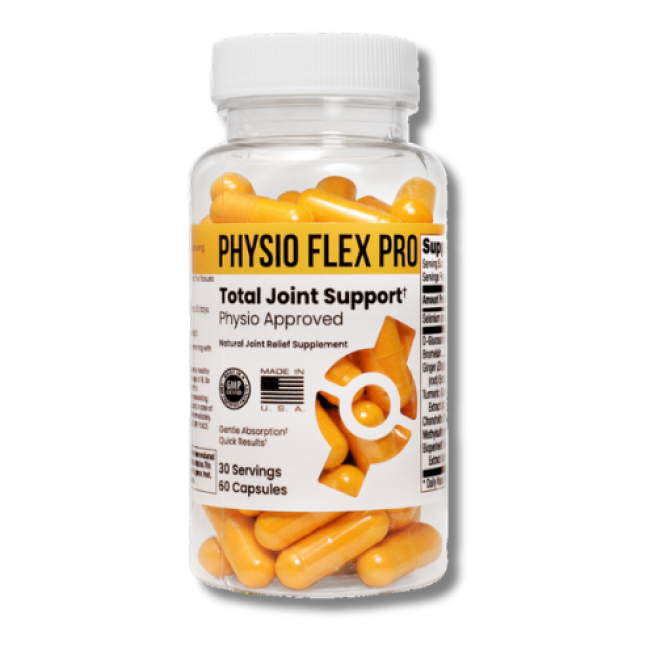When the radial nerve is damaged or pinched due to trauma, it may impair the use of your arm and cause considerable pain and discomfort, which may limit your daily activities and quality of life.
Radial nerve flossing can stretch irritated nerves, improve range of motion, and reduce pain. But how does it work exactly?
Explanation of the Radial Nerve
The radial nerve is part of the peripheral nervous system, which sends signals from your brain to your arms, fingers, lower limbs, skin, and internal organs. It provides the arm's motor (movement) and sensory functions. It helps you move your elbow, wrist, hand, and fingers. It also stimulates muscles to straighten and raise the elbows, wrists, hands, and fingers and provides sensations to portions of the upper arm, forearm, and the back of the hand and fingers.
The radial nerve runs down the back of the arm from the armpit to the hand and courses from the axilla to the posterior compartment of the arm, then into the anterior compartment of the arm, and continues into the posterior compartment of the forearm.
Radial Nerve Issues
Symptoms
The most common symptoms of radial joint injuries include:
- Pain and discomfort in the middle finger, index finger, thumb, back of the hand, and arm.
- Numbness and weakness
- Burning or prickling sensation (paresthesia)
- Wrist or finger drops
- Problems grasping, pinching, or picking up objects.
Risk Factors
Radial nerve injuries tend to occur mostly because of humeral shaft fractures; studies show that radial nerve palsies in closed humeral shaft fractures have an incidence of 7%-17%. In other cases, some nerves are stretched, compressed, or, in the most serious cases, ripped apart or torn away from the spinal cord.
Overuse injuries also put a strain on the radial nerves. These injuries with the knees are caused by performing a repetitive motion. One study shows that people working in professions like mining, construction work, and carpentry often suffer overuse injuries due to the repetitive minutia of activity.
Patients with diabetes can also be prone to diabetic neuropathy. Over time, high blood glucose (blood sugar) and high triglyceride levels in the blood from diabetes can damage your nerves, especially the radial nerves.
What is Radial Nerve Flossing?
Definition and Explanation
Nerve flossing exercises involve undoing nerve restrictions affecting the nerve by slowly gliding it back and forth within its sheath to enable smooth movement of peripheral nerves, which extend from the brain and spinal cord to the rest of the body. The exercises help the peripheral nerves move freely without impediment as a joint or muscle is extended or flexed.
There are three types of nerve-flossing exercises for the upper extremities:
- Median - Targets the median nerve, which provides motor innervation to the flexor muscles of the forearm and hand
- Ulnar - Targets the ulnar nerve, responsible for the sensory cutaneous innervation to the medial forearm, medial wrist, and medial one-and-one-half digits.
- Radial - Targets the radial nerve, the nerve responsible for the movement in the elbows, wrists, hands, and fingers.
Benefits of Radial Nerve Flossing
Immediate and Long-term Benefits
Radial nerve flossing is a set of various exercises that help stretch or release trapped, compressed, or injured radial nerves, promoting strength, flexibility, and nerve mobilization.
These exercises aim to:
- Increase range of motion
- Reduce damage to nerves
- Improve strength and flexibility
- Relieve pain
- Release nerve tension
Scientific Research & Backing
Studies show that conditions like sciatic, carpal tunnel syndrome, plantar fasciitis, herniated disks, and muscle strains can also benefit from nerve flossing.
One study, in particular, found that it helped reduce symptoms like pain sensation in patients with hemophilia, while a 2014 study done on computer users showed that lateral elbow pain was reduced through radial nerve mobilization exercises.
Experts also believe nerve flossing can achieve better results, especially with other treatment methods like physiotherapy, medication, etc. However, given the scant research on the topic, more high-quality research is needed to fully determine its mechanisms’ effectiveness.
Radial Nerve Flossing Exercises
Preparation and Safety
Radial nerve flossing is relatively safe with few risks, especially when the exercises are done accordingly with caution to the guidelines prescribed by your healthcare provider.
Before doing the exercises, do some light arm, wrist, or finger stretches to allow more range of movement later on.
Step-by-Step Guide To Radial Nerve Flossing
We have two radial nerve floss exercises to relieve the radial nerves. You can watch the videos below as a reference.
Radial Nerve Floss #1
Radial nerve glide exercises help straighten the elbow, wrist, thumb, and fingers and relieve numbness.
Steps:
- Stand straight, and hang your affected arm at the side.
- Hold down the opposite shoulder with the opposite hand.
- Turn your shoulder inwards, bend your wrist back with your fist pointing towards you. This movement causes tension in the arm and stretches the radial nerve.
You may also do the flossings with open hands. To strengthen the stretch, bend your neck to the opposite side.
Radial Nerve Floss #2

This second radial nerve stretch is almost the same as the first one, but the positioning of the fingers differs. Here, you bend your wrist with your fist pointing away. Repeat the movements for the same number of reps as the other one.
Other Helpful Exercises
Other exercises can also help relieve radial nerve problems like grip and finger stiffness.
Ball Grip/Squeeze

Grip exercises help regain a stronger grip and finger flexion on the affected hand.
You will need to use a small softball for this exercise:
Steps:
- Hold the ball in your hands tightly. Make sure to wrap all the fingers around it.
- Squeeze and then relax your hand.
- Repeat the movements for 10 to 15 times.
Rubber Band Finger Stretch
You’ll only need a simple, sturdy rubber band for this exercise (though if you have a finger resistance band at home, that works better). You’re also free to add extra rubber bands for additional resistance.
Steps:
- Place a rubber band around all five fingers on one hand*.
- Stretch your fingers out as wide as you can. You may do it in a sideways or a “close-open” manner.
- Relax them again slowly
- Repeat the movements for 10 to 15 times.
You can exercise each finger by placing it around the thumb and finger of your choice.
FAQ Section
1. What is the radial nerve, and how is it different from other nerves?
The radial nerve is one of three nerves in the upper extremities. The radial nerve is responsible for the movement of the elbows, wrists, hands, and fingers; the median nerve provides motor innervation to the flexor muscles of the forearm and hand, while the ulnar nerve is responsible for the innervation to the medial forearm, medial wrist, and medial one-and-one-half digits.
2. How often should one perform radial nerve flossing exercises?
For all types of nerve flossing, the exercise should generally be done at least once a day for best results.
3. Are there any risks or side effects associated with radial nerve flossing?
Radial nerve flossing is generally safe and poses little risk of problems if the movements are done cautiously as prescribed by the healthcare provider.
4. Can radial nerve flossing be done at home, or is a physical therapist needed
Yes, the flossing exercises can also be done at home.
5. How long can one expect to see improvements after starting radial nerve flossing exercises?
The symptoms will usually subside over six to eight weeks if the flossing exercises are done diligently.
6. Are there alternative treatments available for radial nerve issues?
While many radial nerve injuries heal on their own, those that are persistent may require surgery. The surgical treatments may also vary depending on the injury sustained.
Conclusion
Radial nerve flossing is a set of exercises that help stretch or release radial nerves that are trapped, compressed, or injured and relieve pain and numbness. These exercises are simple and can be done in the comfort of your home, but should be done as the healthcare provider prescribes.
Nerve health is primordial to overall mobility, so it’s important to maintain healthy habits like keeping the mind at peace, observing a nutritious, musculoskeletal-beneficial diet, and engaging in regular physical activity to keep the nervous system healthy and kicking.
Additional Resources:
- Peacock M, Douglas S, Nair P. Neural mobilization in low back and radicular pain: a systematic review. J Man Manip Ther. 2023 Feb;31(1):4-12. doi: 10.1080/10669817.2022.2065599. Epub 2022 May 18. PMID: 35583521; PMCID: PMC9848316./ https://www.ncbi.nlm.nih.gov/pmc/articles/PMC9848316/
- Arumugam V, Selvam S, MacDermid JC. Radial nerve mobilization reduces lateral elbow pain and provides short-term relief in computer users. Open Orthop J. 2014 Oct 17;8:368-71. doi: 10.2174/1874325001408010368. PMID: 25352930; PMCID: PMC4209496. https://www.ncbi.nlm.nih.gov/pmc/articles/PMC4209496/
- Hegeman EM, Polmear M, Scanaliato JP, Nesti L, Dunn JC. Incidence and Management of Radial Nerve Palsies in Humeral Shaft Fractures: A Systematic Review. Cureus. 2020 Nov 15;12(11):e11490. doi: 10.7759/cureus.11490. PMID: 33335819; PMCID: PMC7736027. https://www.ncbi.nlm.nih.gov/pmc/articles/PMC7736027/






